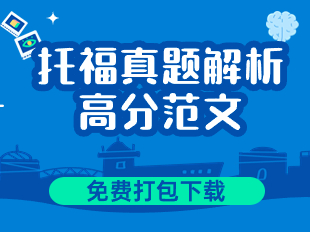托福听力常考知识点剖析:红光与远红光
- 2018年05月08日17:13 来源:小站整理
- 参与(0) 阅读(7591)
托福听力涉及话题多样,尤其是偏向于学术课堂场景的讲座类,经常考到一些我们并不熟悉的学科,适当的掌握一些背景知识和常考考点有助于我们更迅速精准地听懂听力内容。光学是托福听力常考学科话题领域之一,无论是机经真题还是托福官方真题Official都能见到它的身影,下面我们就结合官方真题Official28的Lecture3涉及的“红光与远红光”,了解一下托福听力会如何考察相关内容吧。
Introduction:
Red and Far-red
光环境是植物生长发育不可缺少的重要物理环境因素之一,通过光质调节,控制植株形态建成是设施栽培领域的一项重要技术。红光和远红光的吸收比率对植物的生长有重要影响。
Background information:
Light isan important environmental factor in most ecosystems. Photosynthetic organismsin particular must sense and respond to light cues to optimize their growth andmetabolism. The quantity, direction and spectral make-up (the color or'quality') of the light sensed by an organism conveys information regarding theabiotic and biotic environment and can be used to control adaptive responses.One superfamily of photosensory receptors comprises the phytochromes ('plantcolor'), which absorb in the red/far-red part of the spectrum. These receptorswere first discovered in plants in the 1950s, but have more recently beenidentified in a broad spectrum of eukaryotic and prokaryotic phyla.
Far-redlight is light at the extreme red end of the visible spectrum, between red andinfra- red light. Usually regarded as the region between 710 and 850 nmwavelength, it is dimly visible to some eyes. It is largely reflected ortransmitted byplantsbecause of the absorbance spectrum of chlorophyll, and itis perceived by the plant photoreceptor phytochrome. However, some organismscan use it as a source of energy in photosynthesis. Far-red light also is usedfor vision by certain organisms such as some species of deep-sea fishes.
Knowledge points:
1. 生态系统中光是十分重要的一个元素。特别是光合生物必须感知和响应光来优化它们的生长和代谢。
2. 光感接收器中间的一部分由光敏色素组成,它吸收光谱中的红光和远红光。
3. 远红光大部分都被植物反射掉了。然而,有些植物在光合作用中用远红光作为能量来源。一些深海鱼类用远红光来辨别视野。
Vocabulary prediction:
Infrared 红外线
Photoreceptor 感光器
Ratio 比率
Simulate 模拟
Test Point – 官方真题Official28L3
Plants are also able to distinguish betweenspecific wavelengths of light that the human eye cannot even see! Specificallythere’s a wavelength called far-red. Although why they call it far- red ... Imean, it is not red at all. It lies in the infrared range of the spectrum. Wecan’t see it, but plants can sense it as a different wavelength.
OK. Now I need to mention another thingabout photosynthesis. I didn’t explain how different wavelengths of light affectphotosynthesis. When a plant absorbs light for performing photosynthesis, itonly absorbs some wavelengths of light and reflects others.
Plants absorb most of the red light thathits them, but plants only absorb some of the far-red light that hits them.They reflect the rest. Remember this, because it’s going to be relevant in anexperiment I want to discuss.
This fascinating experiment showed thatplants not only detect and react to specific wavelengths of light, plants canalso detect and react to changes in the ratio of one wavelength to another.This experiment was called the Pampas experiment.
Knowledge points
1.远红外线并不是红色的。只是它位于光谱中红外线的频谱。人类不能看见,但是植物能够感知它。
2.当植物吸收光线用作光合作用,植物仅仅吸收一些特定波长的光线,反射另一些。
3.植物吸收大部分的投射到的红光,但是植物只吸收一部分远红光。
4.植物也可以就不同波长的比率做反应。





































